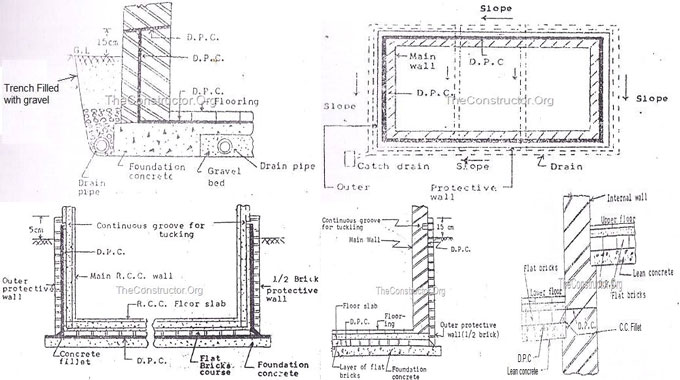NEWS | SOFTWARE | SHEET
Dam Proof Course (DPC)- Process of DPC Installation in the field of Construction
To restrict the water movement through the walls and floors of the underground layer, Moisture barrier (DPC) is used. The following describes the materials to be used in the damp proof process:
Materials requires on Damp proof course (DPC):
Properties of Effective moistureproof material are:
- It should be resistant to chemical corrosion.
- It should be resistant to water.
- Dimensional stability.
- It should not have deliquescent salt, such as sulfate, chloride and nitrate.
- It should be tough and should withstand dead loads and loads without damage.
Damp proof course material type is generally used to check the humidity of the material. It can be divided into the following three categories:
- Rigid materials: First-class brick, stone, stone, concrete, etc. falls under rigid materials.
- Semi rigid materials: Frankincense resin, or material or combination of asphalt layer are example of semi rigid materials.
- Flexible materials: Burlap or fiber / glass fiber based asphalt felt, plastic sheet (polyethylene sheet), etc. falls under flexible materials.
How to select materials to build moistureproof course: The selection of materials to be used as an effective moisture proof need a careful consideration. It depends on the availability of DPC, nature of the structure, atmospheric conditions and the climate.
- DPC materials for the roof, floor and others: It is recommended to have the greater wall thickness or DPC. It should be placed in such as floor, roof and other large area. You should choose only to provide a flexible material, such as small number of joint cement asphalt, asphalt felt, plastic plate, etc.The use of blankets should be used when properly bonded on the surface of asphalt, and with proper grinding and sealing joint.
- In the wet and humid environments, mixed concrete should be used. Through the mixing process to the composition of the waterproof material such as Pudlo, Impermo, Waterlock, etc., make the concrete further dense. The utility model is used for applying two layers of hot asphalt on the surface of the concrete DPC.
- DPC materials for above the ground: DPC for above the wall thickness should not be more than 40 cm. For above the ground, you can use the following types of materials. But, the cement concrete is usually used for the purpose of being located at the bottom of the DPC material, 38 to 50mm thick cement concrete M15 (1:2:4 mixture) under normal conditions.
- DPC material in case of differential thermal movement: In the fence wall and other such areas, it is recommend to use the like of frankincense resin, asphalt, asphalt felt and metal (copper or lead) materials.It is significant to make sure that the DPC material is flexible, so that it can avoid because of the difference of thermal motion between the roof materials and wall caused any damage or piercing materials.
Now everyone will be capable of obtaining all the functionality required to produce a high-powered 3D viewer with full, powerful interrogation functionality on a mobile device with the aptitude to load CAD data devoid of processing it previously.

Picture Courtesy & Source: theconstructor.org

